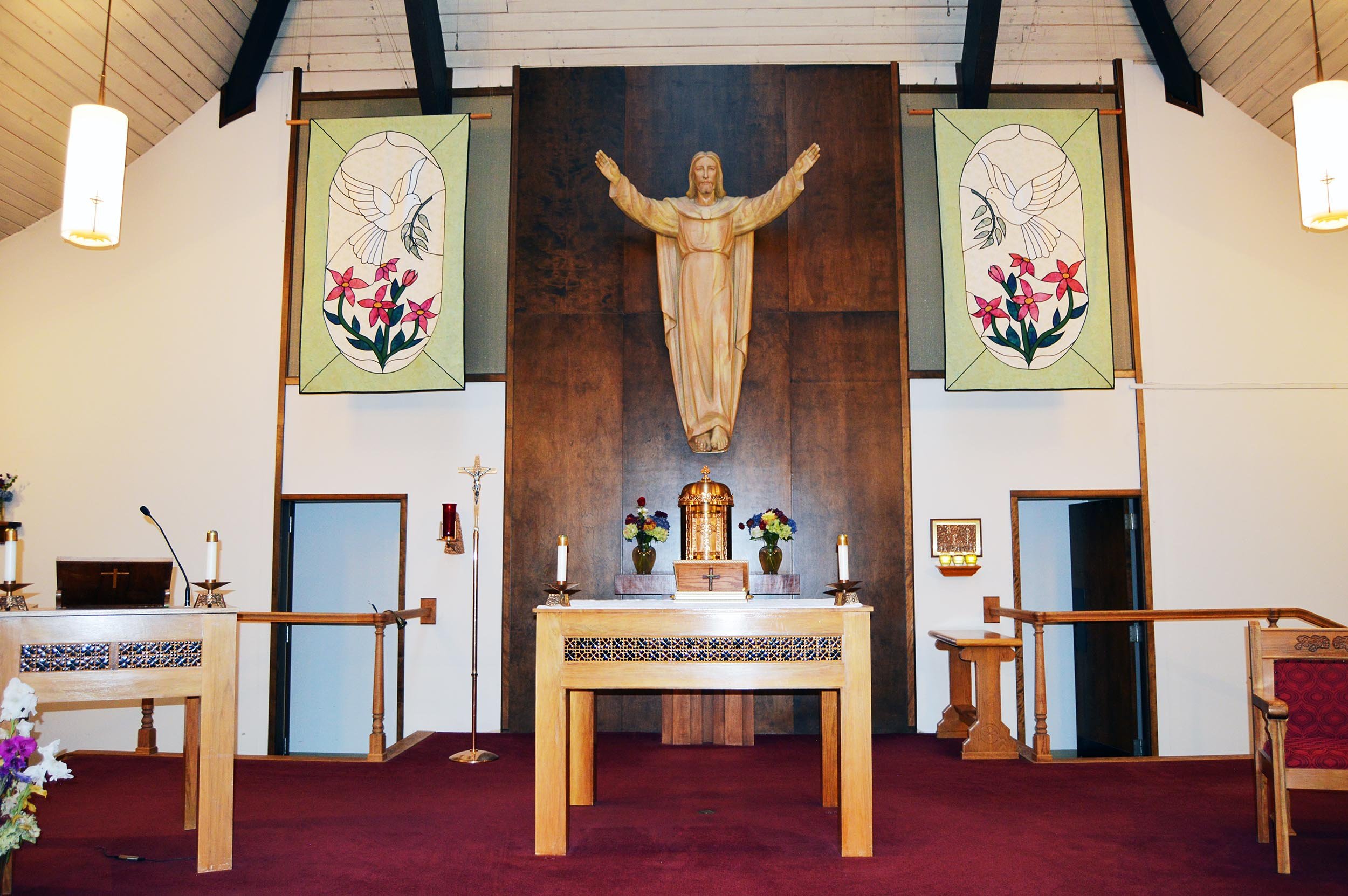
About St. Olaf Parish
The United States Navy has held a prominent role in this region since the late 1800s. In the 1960s, the Navy significantly expanded its presence near our city, prompting the creation of Saint Olaf Parish, named in acknowledgement of the many people of Scandinavian heritage who settled the Poulsbo area.
Saint Olaf parish extends from the Silverdale/Poulsbo boundary in the south, up through Kingston to Hansville at the north, and from the shoreline of Suquamish and Indianola on the east over to Port Ludlow on the west.
In 2019 we celebrated our 50 Year Jubilee. During this celebration the Diocese of Oslo in Norway gifted us with a relic of the historical Saint Olaf. They also shared with us a scholarly lecture on his life and legacy. We recognize the presence of the relic of Saint Olaf in our midst as having set the stage for the next fifty years of our parish family life.
Recently we’ve come to recognize our need to be present to those whose life narratives include abuse and/or trauma. In support of this, we’ve been educating ourselves on these topics from many perspectives, and increasing our competency for companioning people along the healing journey leading to life.
We are also very fortunate to be blessed with a beautiful, extensive, wooded campus. We recognize the blessing this resource brings to people who nowadays often live with an excess of artificial noise. More and more we strive to provide an environment conducive to nature, ecological health, and rest. This is one of our emerging ministries, for all visitors and as a blessing for our surrounding community.
In addition to these special elements, we also experience great joy in offering a number of quality ministries in support of the ongoing daily walk of people throughout the community, who come to us for education, sacraments, times of bereavement, spiritual growth, and for other pastoral needs. Please visit this page for further information.

The earth is full of the loving kindness of the Lord.
—Psalm 33:5
Saint Olaf of Norway, King & Martyr
AD 995 – 1030
Baptized AD 1013/1014 in France
Saint Olaf established the Norwegian state on law. His predecessors as king established it by violence and force. Olaf introduced a European model for his reign.
But to move the country and the people from Viking violence to Christian civilization is a unique achievement. What makes it even more remarkable is the change in the people that happened because of and after Olaf’s death. He did not live to see this change.
His last moment was the Battle of Stiklestad. Apparently, this battle was won by those who wanted to tear the Christian state apart – a state modeled on England and Normandy – and put the people under foreign and arbitrary rule. Not only the people but also its aristocracy realized afterward that Olaf’s reign was milder, kinder, and more just, than that of the Danish vassals. Christian civilization, with all its demands, hitherto unknown, was then seen as a blessing. The king was their friend and protector, though he had to die before they realized it.
Why is Olaf a saint and a martyr? Olaf no longer fought for himself but for the faith and the consequences of the faith, equality before the law, protection of the weak, for the nation, and against arbitrary/foreign rule. In the Battle of Stiklestad, he was prepared to lay down his life, and he did.
Olaf’s death changed the people, his values became Norway’s values, and his law was accepted for the next 500 years. There were miracles and his intercession was forceful. Olaf was thought unreasonable during his time as king, however, after his death, he influenced a nation dominated by brutal men that justice before God is more important, as only a saint could do.
Source:
Presentation given by, Bishop Bernt Ivar Eidsvig, CRSA
Bishop of Oslo, Norway
Saint Olaf Parish in Poulsbo, WA on November 17th, 2019
On the occasion of our 50 Year Jubilee
